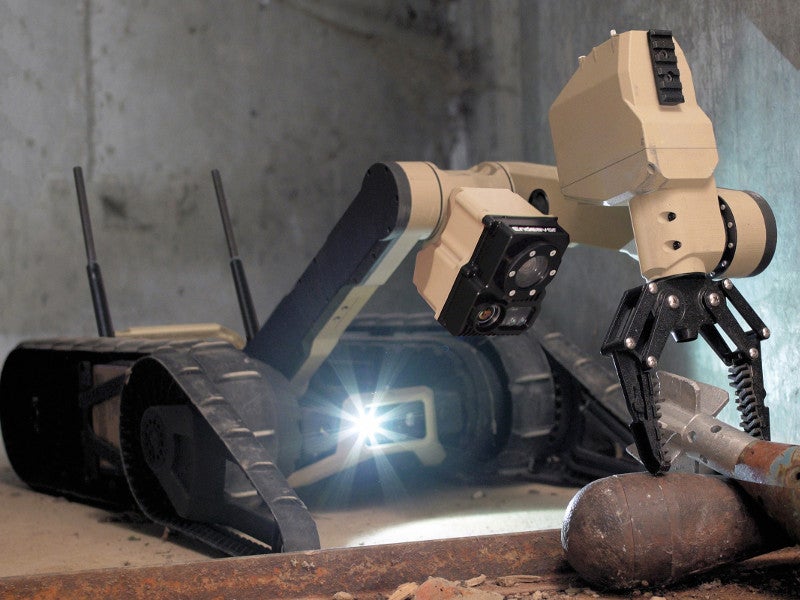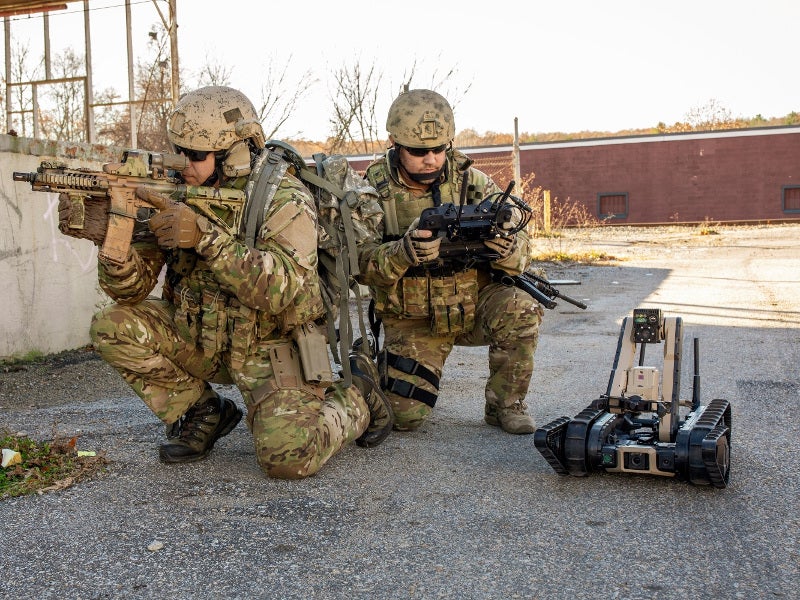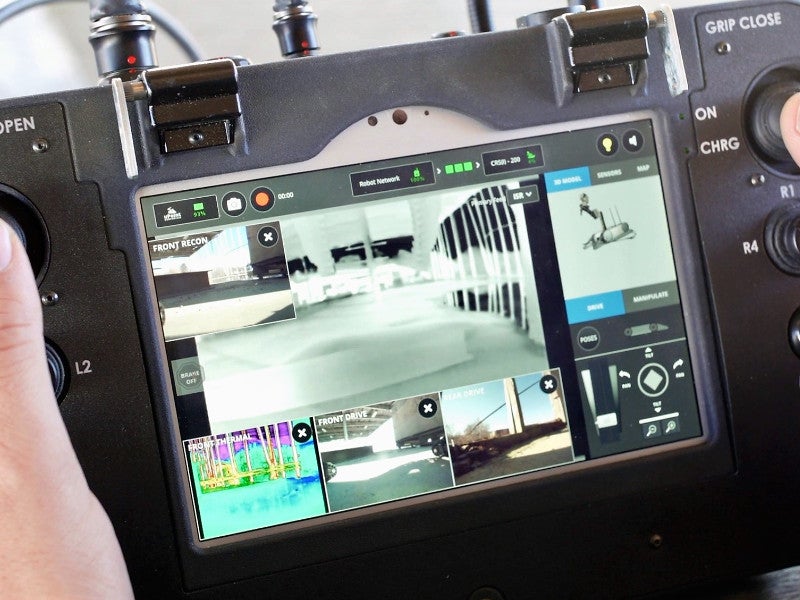Scorpion unmanned ground vehicle (UGV) was designed and developed by Endeavor Robotics for the US Army’s Common Robotic System-Individual (CRS-I) programme.
The high-mobility UGV is intended to support explosive ordinance disposal, and intelligence, surveillance and reconnaissance missions.
Endeavor Robotics unveiled the Scorpion unmanned ground vehicle in December 2018.
Scorpion UGV design and features
The high-mobility UGV is designed to perform complex missions in the field. It is made of high-quality modern composite material, which enables it to resist harsh environments and challenging weather conditions.
High-quality tracks fitted to the UGV allow it to tread any challenging region with ease. The vehicle also features movable split tracks, which assist and support its movements on challenging terrains. The split tracks will be positioned alongside the main tracks when not in use.
The Scorpion’s rugged design provides unparalleled capacity to bare impact upon fall. Its sophisticated software system allows for performing rollover and self-right itself in the event of drop or toppling upon encountering hurdles.
It weighs less than 25lb (11.33kg) and can be easily carried to the battlefields in a backpack. The operator can repair the vehicle by utilising 3D printed parts.
Payload system of Scorpion UGV
The open architecture design of the UGV enables the operator to configure the vehicle with multiple payloads for infantry operations, engineering missions, and chemical, biological, radiological and nuclear (CBRN) defence operations.
Scorpion UGV is fitted with a highly dexterous arm, which can perform challenging tasks with ease. The manipulator arm can extend up to a length of 24in and can lift up to 6.8kg.
Its robotic arm enables the UGV to reach hard-to-reach locations. It features a gripper and can be used for neutralising improvised explosive devices (IEDs).
The vehicle’s design also has docking space for the arm. The arm folds into the dock thereby protecting itself in the event of fall. It offers a high degree of rotation with the flexibility to reach vertical heights for performing operations.
Scorpion’s robotic arm can be optionally fitted with an inline gripper camera, which provides a steady view to the operator while performing operations such as opening or unscrewing parts in remote locations.
The UGV is also installed with high-definition cameras including pan–tilt–zoom (PTZ) and thermal cameras, which provide views from various angles and positions. It can provide high-definition imagery during day and night.
Control unit of Scorpion unmanned ground vehicle
The hand-held control unit of the Scorpion integrates a display screen. The touchscreen unit is an easy-to-use system with picture-in-picture video streaming options.
Scorpion’s control unit has provisions to position the vehicle to pre-set points and ensures the operator to view and control other unmanned vehicles for improved battlefield awareness.
Performance
The Scorpion unmanned ground vehicle is designed to operate in modern and urban warfare conditions. It can climb and descend stairs with ease and ford through shallow water bodies.
The UGV can cross vertical obstacles with ease and can traverse through terrains laid with rocks, muddy roads, and sandy areas.






